#female rose-breasted grosbeak
Explore tagged Tumblr posts
Text
Exercise Fic Recs 11
Back to Superbat fanfic for this week! Well, almost all Superbat. There is one Twobats (Burharvey?) fic included, “Dad’s New Boyfriend” by TheClamBeforetheStorm. It’s not completed, but it’s been fun to read! The first fic is an update of one I’m currently following as well (I think I’ve recced it before, still so good!). The other three are Supebat :D
dead man’s party by TheResurrectionist
Dad’s New Boyfriend by TheClamBeforetheStorm
the difference between stone and skin (is immaterial) by vectacular
hear the future whisper by Anonymous
Mind if I cut in? by Mawiish
The weather is getting warmer, and this weekend has been so nice. I went out and touched grass twice this week! There’s a nice little park close to where I live, so I walked around there yesterday. I was able to get some pictures of robins! Unfortunately, Batman was nowhere to be seen 😔
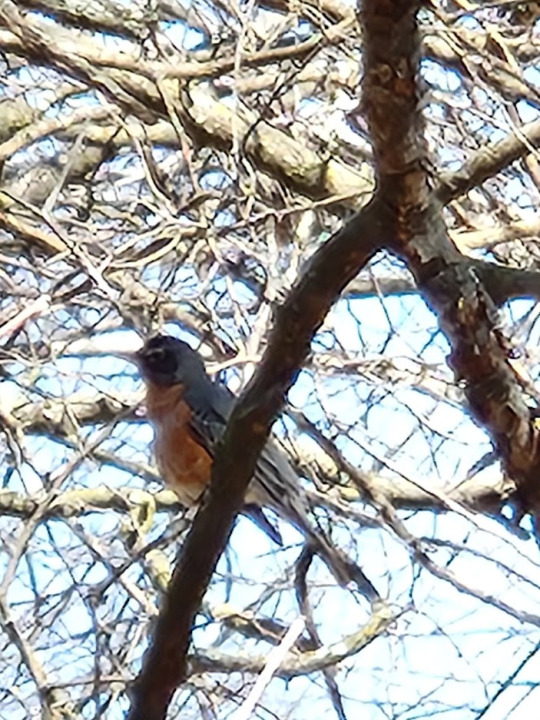

The coffee shop I go to updated there seasonal lattes for Spring! I got a Hibiscus Morning latte to go with my pastry and breakfast sandwich. Very tasty!

It’s getting more and more green at the arboretum!

Trees and bushes are starting to bud!!

I took the long, rocky path today! I like how the rocks make the path look like it has steps.

I just thought this pool of water looked neat.
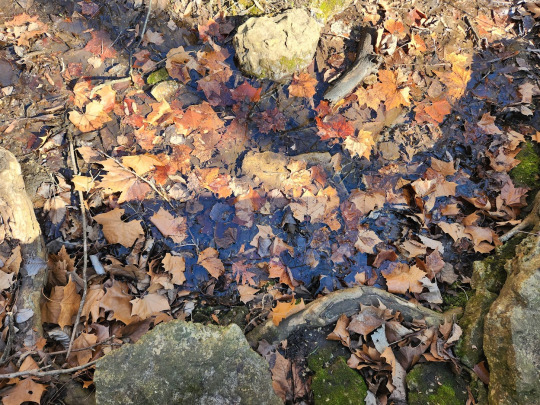
Lots of birds at the bird watch station! A blue jay, female rose-breasted grosbeak (I think???), robin (again, no Batman around), female red-bellied woodpecker, and male dark-eyed junco.
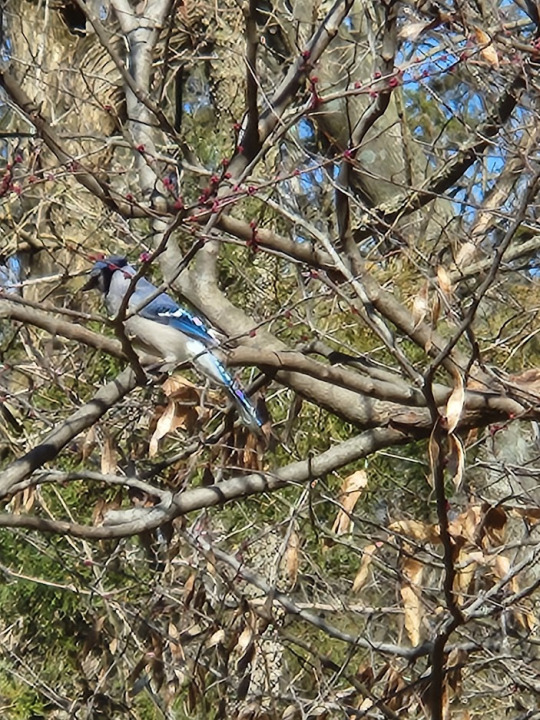


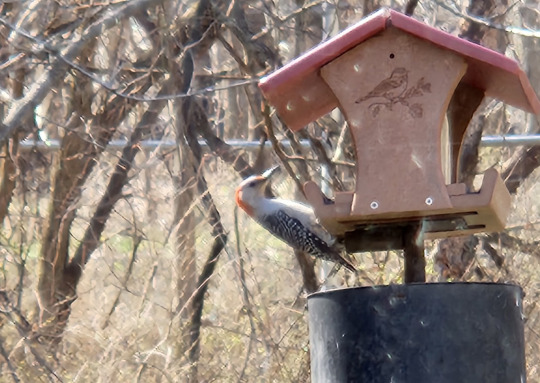

There was also a white tailed deer hanging around too??? We both looked at each other in shock for a bit, because we surprised each other. There are fences around this area of the arboretum to keep the deer out because they’ll eat all the pretty flowers. I have no idea how this guy got in here, but it’s not the first time I’ve seen them in this area of the arboretum.

#adventures in exercising#the great outdoors#fanfiction#fic recs#superbat#twobats#coffee#birds#blue jay#robin#female rose-breasted grosbeak#dark-eyed junco#red-bellied woodpecker#deer#white tailed deer#it's nice that weather is getting warmer#i really enjoy going outside#and seeing the new plants budding and blooming#and I'm excited for the new birds to come by my feeders#i got my humming bird feeder out today#i'm hoping to attract some this year since i wasn't able to last year#i even planted some wild flowers in little planters on my balcony to attract them#(and bees!)#we'll see what happens :D
12 notes
·
View notes
Text
i love my dad. he rescues turtles from busy streets and gets sad when he drives past roadkill. he took me birding for the first time on my birthday. he refills the birdfeeders every week. look at these cool pictures he took in our backyard


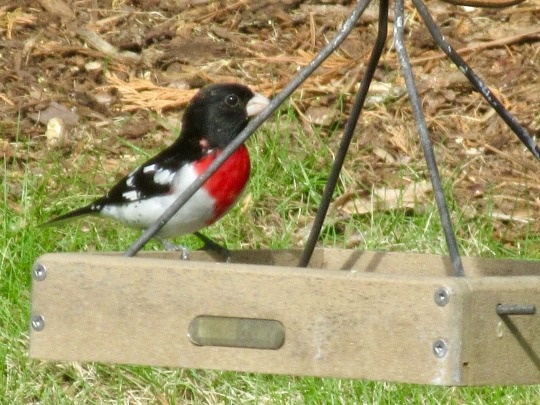
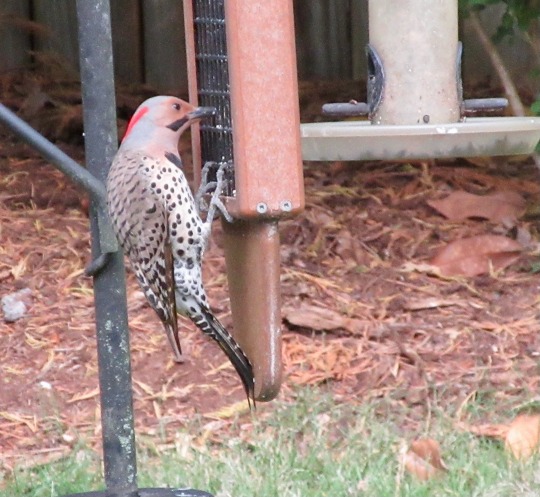
#yes sometimes I question his philosophical and religious beliefs#but other than that he’s such a wonderful dad who has always treated me well#and he loves nature just as much as I do :)#personal#father's day#sort of lol#🌿 my photography#also technically not mine but it helps to sort#northern flicker#mourning dove#rose-breasted grosbeak#the first flicker is a female and the last pic is a male
4 notes
·
View notes
Text
Ooh I have an answer for this!
This is an adult male's non-breeding plumage! They're breeding plumage is that classic black head and crisp contrast between a red-breast and white belly. As they transition into their non-breeding plumage, the males will take on an appearance closer to the females, but with dark brown or black in place of the brown that would be on the female's face. They'll still keep a little bit of that red breast in the center, but their sides will become streaky and a bit brown as well. Young males will usually look just like females during their first fall, except for having the darker brown/black head feathers the same as the older males.

(Photo pulled from my Sibley Guide app)
About two days ago,
I started hearing baby calls of Grosbeaks, Blue Jays and Orioles. Grosbeak babies have a very cute and gentle begging call, almost like a teensy wailing. The young ones look like the females, and male plumage takes quite a while to develop, with some cool patchwork patterns in between. The males’ chest pattern varies in shape, size and vibrancy but usually they all have a fully black head. This guy that came yesterday does not. It is interesting because he otherwise looks like a regular adult male. I am adding two others for comparison. I also like that his chest pattern looks like a heart.





#rose breasted grosbeak#theyre so freakin pretty!!#i got to work with them during a fall banding season and they bite Really Hard#but it was always fun to see the plumage variation since some older females get dark too and the young males are all over the place
156 notes
·
View notes
Text
Okay, I plan on making a new harpy oc that has bilateral gynandromorphism(a condition were an animal has half male and half female traits on it's body), but I'am having a hard time deciding on the bird... I do have three candidates, all of which have been found with this condition.
A rose breasted grosbeak

An American cardinal

Or a green honey creeper

Most likely they would have been bought by the casino because of their rare conditions, but I'll make up more details about them depending on what bird I choose!! Of course, there is no pressure to vote!
73 notes
·
View notes
Text


Rose-breasted Grosbeak female and male. Shy birds today.
45 notes
·
View notes
Text
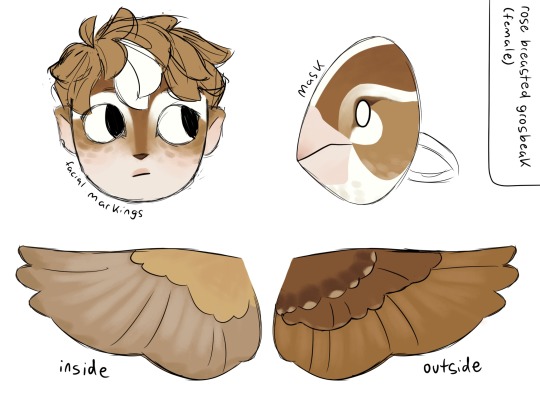
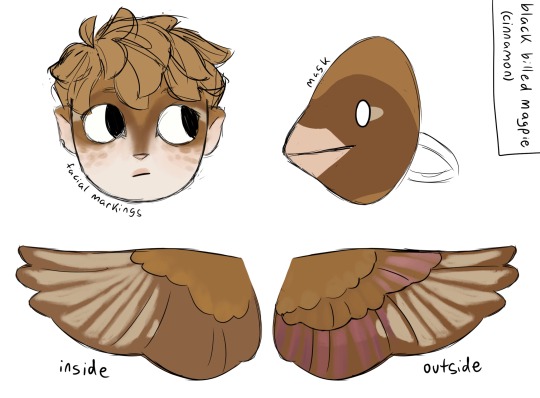
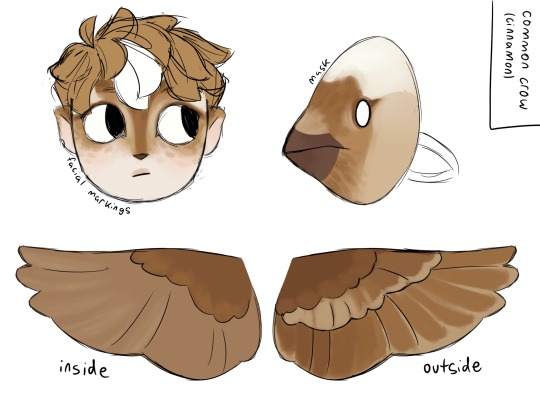
If you click the names of the birds below, you will find photos of the actual birds I’m referring to; mostly provided because the second two are morphs
EDIT: So honestly. Contrary to final poll results and my initial lean toward the grosbeak, I think I might just go with the crow. The design’s grown on me and in the last week I’ve collected many bones and observed many local crows and found myself just quietly very drawn to them. Nothing’s set in stone, but. . . It feels more right than the grosbeak- there are still things that draw me to the latter, and I still really love them and might switch in the future, right now I relate more to crows I think.
Rose Breasted/Cutthroat Grosbeak (female)
Similarities (between myself and the bird) - small and chunky - eats mainly seeds, fruits, and nuts - elusive and relatively solitary aside from nesting season - very intricate, unique nest type - monogamous - take care of young for a month after fledging (which is longer than quite a few birds) - dwells mainly in deciduous forests - I honestly think I do look a bit like a grosbeak overall - there is limited information on them (which is obnoxious, but kinda goes with my aesthetic honestly)
Things I Like About Them - very pretty markings, especially on face which makes for fun character design - they were my favorite bird as a child and I would get so excited during the brief period that they would be at our feeder
Differences - females don’t sing as much as males - I am very much a mimic- I echo other people’s words as well as animal noises a lot, mostly without thinking, and grosbeaks do not mimic. The males learn songs from their fathers, but that’s different, and I’m not male anyway.
Black Billed Magpie (cinnamon)
Similarities - eat a lot of fruit and grain - they are skilled mimics - mate for life something I aspire to achieve one day - have only been seen in Michigan ten times in the last hundred years, so it fits the “elusive bird who’s sightings should be documented” narrative - parents allow their young to stay with them as long as needed, sometimes even years - males and females are both very vocal and sing, talk, and chatter quite often - wary of new things and will shy away from bright colors and flashing lights (yes, that includes shiny things) - many widely believed myths spread about them (such as tendencies to thievery, attraction to shiny objects, and hoarding things tho I am guilty of that last one)
Things I Like About Them - Gorgeous wings and tail (though rather plain facial markings which is sad) - they’re just nice, funky little guys and they were one of my favorites when I was younger as well
Differences - not a bird I’d really call chunky lol - they eat meat (mostly bugs) and meat is not my favorite honestly - while some do only stay in groups of two, many others have tribe of up to twelve
Common Crow (cinnamon)
Similarities - will bring people they like random bits of things such leaves, rocks, lost keys, and bones, as gifts - stops for roadkill (though I don’t eat it, I’m just there to steal feathers or check opossum pouches for potential surviving babies) - bones is good, we like bones - also talented at imitating human speech, other animals, and just random noises they find intriguing - mate for life - very family oriented and good at taking care of each other. They’ve even been known to adopt unrelated fledglings - stay in the nest up to forty days after hatching and often remain with a family group for two years, helping their parents look after younger siblings - males and females are very vocal - wants to eat rocks - scavengers - likes fruits, nuts, and seeds - seen as weird or gross by the majority - slow to trust humans, but is very loyal once they do - could be considered chunky - cinnamons tend to have blue or silver eyes
Things I Like About Them - they are just. very good. - wing markings of cinnamons are very interesting, and while I’d like more intricacies to work with for facial markings, they’re still good and simple
Differences - they are very social birds (but most of that social time is spent with their family, which is where most of mine is spent as well, so I’m not sure this is a true difference) - consumes a lot of meat (which, as stated, is not my favorite) - they are very common in Michigan and easy to spot almost anywhere
#avian#avian character design#character design#poll#because I’m indecisive and need help#I know which design I like best#and I know which personality fits best#but they are not the same#and that is irritating#avariel#me#Ava art#sona#persona#my art#small artist#artists on tumblr#oc artist#tumblr poll#tumblr polls#chibi style#digital art#young artist
46 notes
·
View notes
Text
Colors of the Wild
This rose breasted grosbeak (Pheucticus ludovicianus) was around last year about this time. I haven't seen any this year, but I still have hope.
"Bursting with black, white, and rose-red, male Rose-breasted Grosbeaks are like an exclamation mark at your bird feeder or in your binoculars. Females and immatures are streaked brown and white with a bold face pattern and enormous bill. Look for these birds in forest edges and woodlands. Listen, too, for their distinctive voices. They sound like American Robins, but listen for an extra sweetness, as if the bird had operatic training; they also make a sharp chink like the squeak of a sneaker." - allaboutbirds.org

#photo#photography#photographer#photographylovers#wildlife#nature#bird#birds#birding#birdwatching#birdphotography#birdsphotography#birds of north america#birdlovers#rose breasted grosbeak#backyard birds#birbs#bird photography#bird watching#birdingphotography#birds nature
21 notes
·
View notes
Text
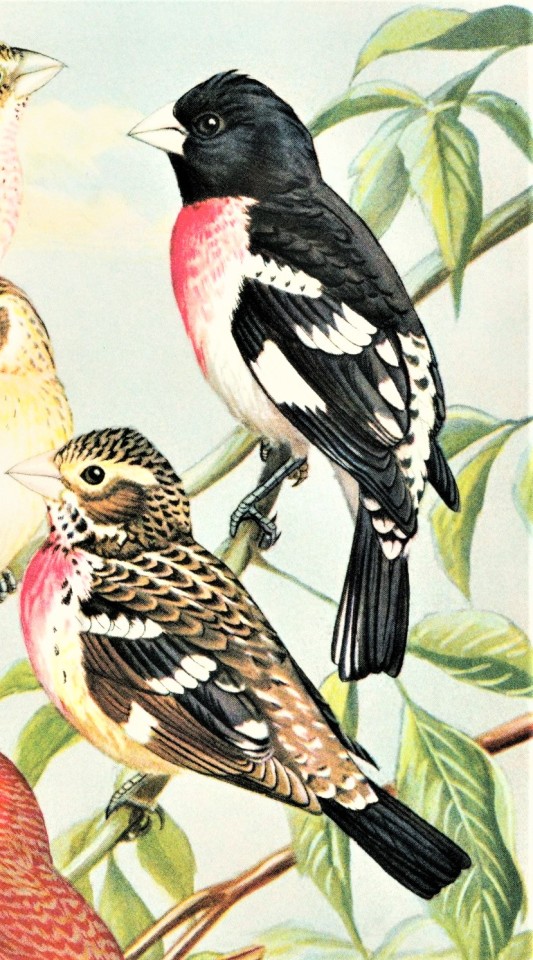
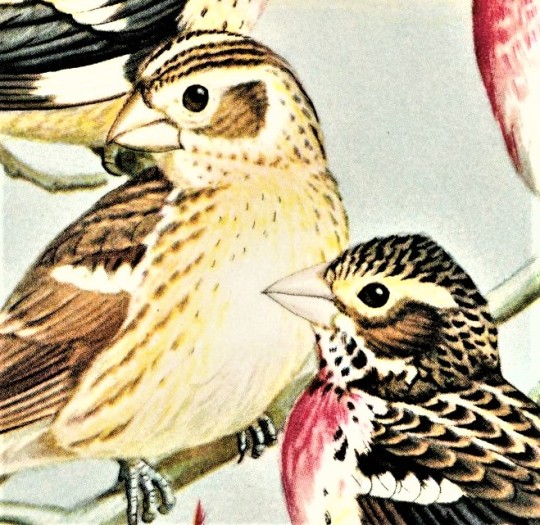




A Cardinalidae Feathursday
The Cardinals (Cardinalis cardinalis) and Rose-breasted Grosbeaks (Pheucticus ludovicianus) in our neighborhood have just been chattering away this early summer. The call of the Cardinal is quite distinctive, but we often confuse the call of the Rose-breasted Grosbeak with that of the American Robin. Some say the Grosbeak sounds like a Robin that has had better music lessons, but we have a hard time telling them apart. What do you think?
Both are members of the family Cardinalidae. The only other species in that family that lives in our area (that we know of) is the Scarlet Tanager (Piranga olivacea), which also sounds remarkably like a Robin, but hoarser. The images shown here are from a 1930 painting by American nature artist Walter Alois Weber reproduced in Bird Portraits in Color by the American physician and ornithologist Thomas Sadler Roberts and published by the University of Minnesota Press in the 1934. The volume includes 92 color plates by five wildlife artists illustrating 295 North American species.
The three birds in the upper left of this plate are winter male, female, and male nestling Rose-breasted Grosbeaks; in the upper right are a fully adult breeding male and first-year breeding male Rose-breasted Grosbeaks; at bottom are adult female and male Cardinals.
View other posts from Bird Portraits in Color.
View more Feathursday posts.
#Feathursday#Northern Cardianls#Rose-breasted Grosbeaks#Cardinalidae#Bird Portraits in Color#Walter Alois Weber#Thomas Sadler Roberts#University of Minnesota Press#bird paintings#wildlife art#biological illustration#birds#birbs!
64 notes
·
View notes
Text

A male cardinal and a female rose-breasted grosbeak.
9 notes
·
View notes
Text
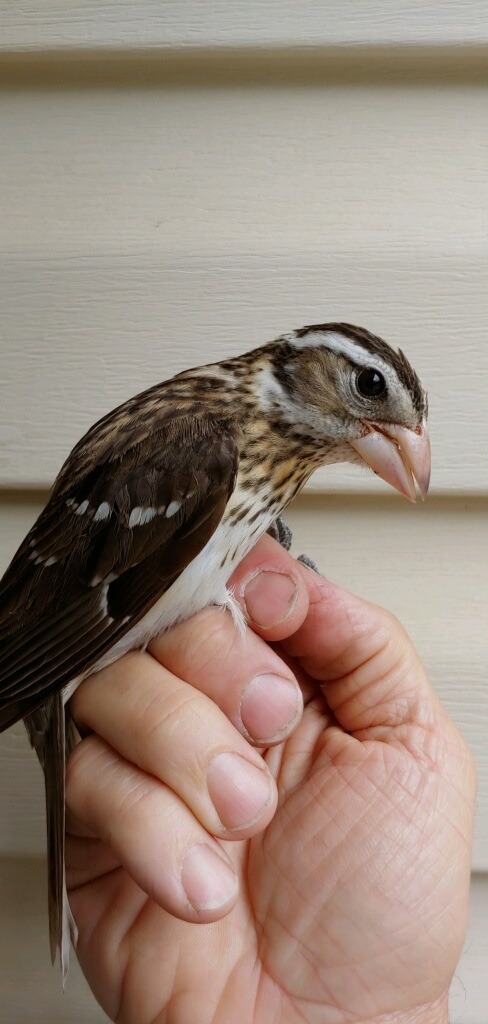
A beautiful female Rose-breasted Grosbeak we caught for our salmonella study
26 notes
·
View notes
Text



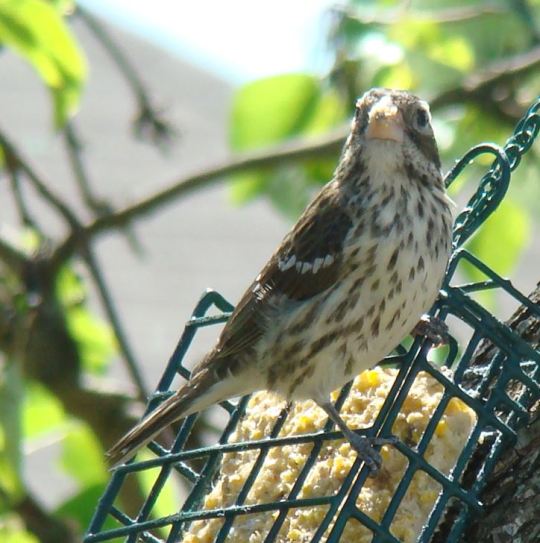
rose-breasted grosbeak . male v female
2 notes
·
View notes
Text
i think i finally managed to see the male rose breasted grosbeak at our feeder… i was pretty sure one of the birds we’ve seen was a female but i hadn’t spotted a male around so i wasn’t like Certain. and this dude was facing away from the window so i couldn’t actually see if he had a rose coloured breast or not lol but he had black and white in the same patterning
#exciting for me!!! i don’t think i’ve seen one of them before#they’re common here apparently i’ve just never really noticed one
3 notes
·
View notes
Text
[Video ID: Several clips of birds visiting a set of bird feeders. Each bird is labeled as it appears. Birds featured are male and female Baltimore orioles, a red headed woodpecker, a blue jay, a tufted titmouse, a male northern cardinal, male and female rose-breasted grosbeaks, and a male downy woodpecker. End ID]
Take a minute to watch some well-loved and cared for birds eat seeds/nuts and drink orange juice
33K notes
·
View notes
Text
Favorite Bird Shots of October '24
Rose-breasted Grosbeak (female). An unusual visitor to my backyard as they only pass through in the spring and fall. I saw a juvenile male the next day. Yellow-billed Cuckoo Red-headed Woodpecker (juvenile) Red-bellied Woodpecker (looks like he’s holding a Chee-to, but I suppose it’s not). Wood Ducks (female) Pine Warbler Yellow-rumped Warbler Northern Flicker Red-Shouldered…

View On WordPress
#birding#Birdwatching#black-throated blue warbler#blue jay#cedar waxwing#monarch butterfly#northern flicker#northern mockingbird#pine warbler#Red-bellied woodpecker#red-headed woodpecker#red-shouldered hawk#rose-breasted grosbeak#wood ducks#woodpeckers#yellow-bellied sapsucker#yellow-billed cuckoo#yellow-rumped warbler
1 note
·
View note
Text
so mad bc i saw my lifer rose-breasted grosbeak (female) yesterday and didn't get a picture >:( she was so pretty too
0 notes
Text
Streaked Beauty

Last year, I posted a different photograph of this same bird, for some reason, I identified it as a house sparrow. I was completely wrong, forgive me because I knew not what I was doing. ;)
This is a female rose breasted grosbeak (Pheucticus ludovicianus).
You know, the photographs that I post here are not quite a vivid as the same photographs that I post at my pixel's gallery, because here, I reduce the size of the photos and usually make a slight reduction in the quality of the photos to make them easier to load.
Take a look: https://swede1952-photographs.pixels.com
#photo#photography#photographer#photographylovers#wildlife#nature#bird#birds#birding#birdwatching#birdphotography#birds of north america#birdsphotography#birdlovers#rose breasted grosbeak#bird photography#birds nature#birdingphotography#bird watching
3 notes
·
View notes